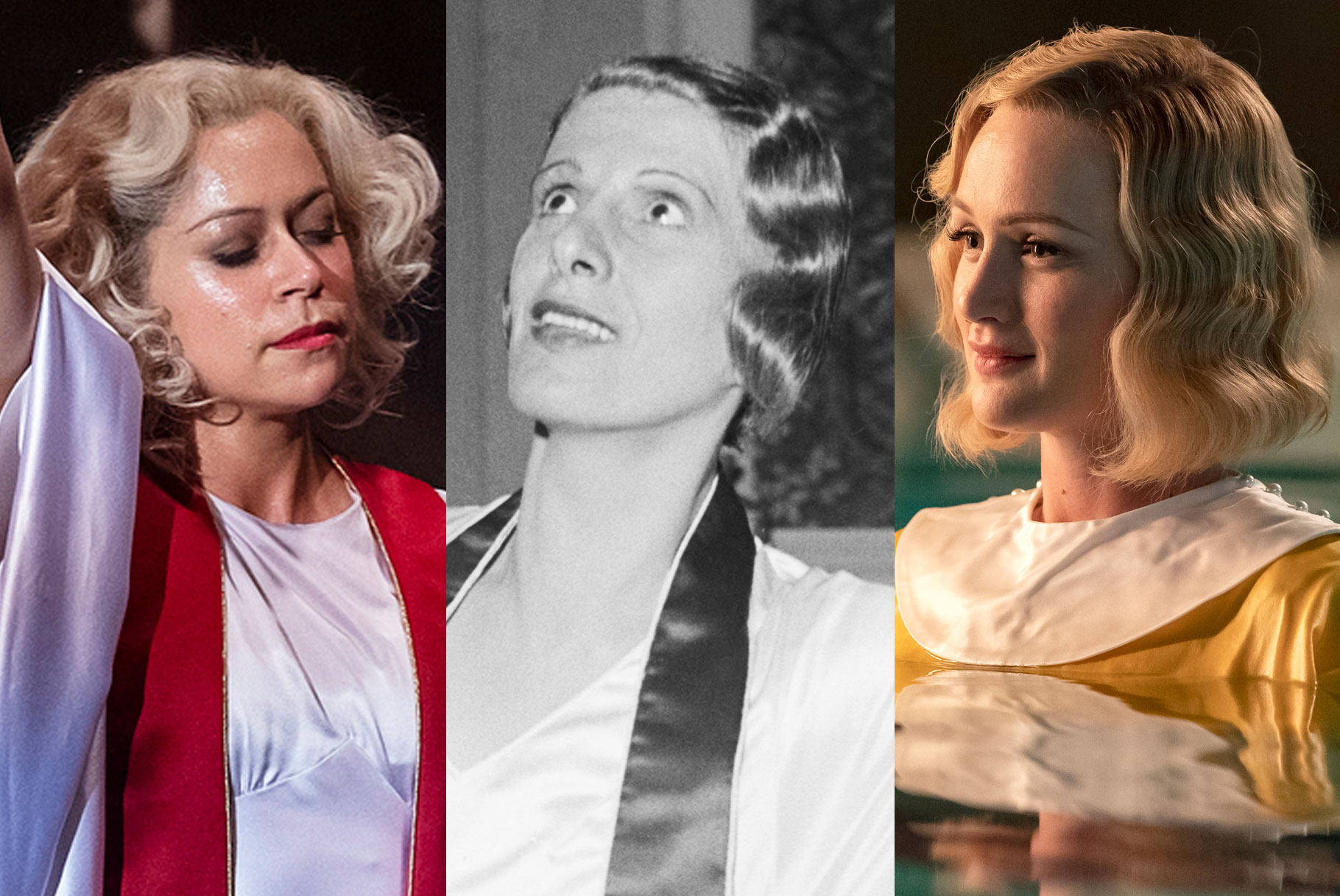Create a free profile to get unlimited access to exclusive videos, breaking news, sweepstakes, and more!
This Depression-Era Televangelist Was The Inspiration For Characters In 'Perry Mason' And 'Penny Dreadful: City Of Angels'
Aimee Semple McPherson, who is recognized as one of America's first televangelists, lived a life full of controversy.

On the surface, HBO's new reboot of legal drama "Perry Mason" and Showtime's dark fantasy series "Penny Dreadful: City of Angels" are very disparate franchises with different goals — but a character in both series draws inspiration from a real-life figure with a sensational and bizarre life.
Both "Perry Mason" and "Penny Dreadful: City of Angels" are set in 1930s Los Angeles and feature characters who are based off Foursquare Church founder Aimee Semple McPherson: Sister Molly Finnister (Kerry Bishé) in the Showtime series and Sister Alice McKeegan (Tatiana Maslany) in the HBO miniseries.
Both Finnister and McKeegan are shown to invoke near cult-like worship from their respective religious communities and use the media of the time (radio) to spread the word of God beyond the confines of a church — much like McPherson did in her time as one of the first modern televangelists.
Who Was Aimee Semple McPherson?
McPherson was born Aimee Elizabeth Kennedy in 1890 on a Canadian farm, according to Smithsonian Magazine. She married Irish missionary Robert Semple before she turned 18 — setting off on an evangelical tour of Asia where Semple would later die from malaria.
McPherson returned to the United States and remarried with accountant Harold Steward McPherson. However, she felt called to become an evangelist and soon set out on a cross-country evangelizing trip — that ended in divorce for the couple, The Foursquare Church's biography of McPherson stated.
The church is named for McPherson's idea of a "four-square gospel" — idealizing Jesus through the corners of the "Only Savior," the "Great Physician," the "Baptizer with the Holy Spirit," and the "Coming Bridegroom," according to Christianity Today.
The evangelist set up a home base of sorts in Los Angeles in 1918, according to a timeline provided by the Foursquare Church. She opened the movement's first church, the Angeles Temple, in 1923 — offering religious services in five different languages.
McPherson was something of a novelty for evangelists of her time: both due to her gender and her events that saw her speaking wildly in tongues and performing apparent miracle healings on her congregation, Smithsonian Magazine reported.
She also possessed a nativist streak, demonizing Japanese Americans and endorsing the KKK, according to an excerpt from Kim Gordon's book "The Second Coming of the KKK." However, she was apparently occasionally odds with these racist movements, with an Arizona Foursquare church alleging that McPherson's ministry got a group of klansmen to remove their robes and hoods and dump them on the ground, as the KKK was protesting the preacher racially integrating her services.
McPherson adopted the mediums of film and radio to help spread her message across America, offering up video sermons such as one where she chided preachers in favor of Prohibition as not practicing what they preached. She also operated the KFSG radio station, which began broadcasting in 1924, the church said.
Her pioneering use of radio and use of film is acknowledged as helping to pave the way for the current ecosystem of conservative talk radio and religious telecasts, the BBC reported in 2014.
After founding the Angeles Temple, McPherson also would go on to create two religious magazines, establish over 400 branch churches (or "lighthouses"), and sponsor hundreds of missions around the world, according to the resources made available by the University of Virginia's American Studies department.
However the preacher is perhaps best remembered for her bizarre disappearance in May 1926 from Los Angeles and reappearance a month later in the Mexican community of Agua Prieta, Sonora.
While McPherson contended she was kidnapped, Los Angeles officials believed she faked the ordeal and eventually charged her — only to drop the case due to unreliable witnesses.
Although she would be subject to mockery in the media from then on, McPherson continued to draw crowds and preach up until her death in 1944. She was found unresponsive in her hotel room and had died from an apparent accidental overdose of barbiturate sleeping pills.

























